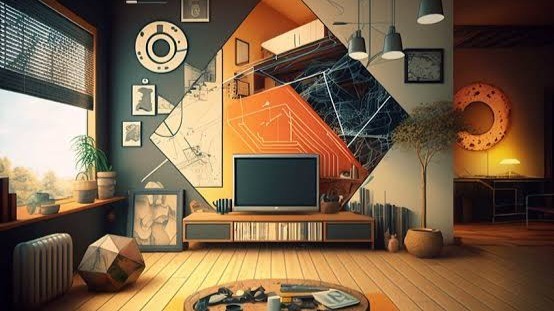
In today’s world, technology has revolutionized almost every aspect of our lives, including the way we design and live in our homes. Smart homes, also known as connected homes, are becoming increasingly popular as more and more people seek to integrate cutting-edge technology into their living spaces. This article will explore the intersection of smart homes and interior design, using a real-life case study to showcase the benefits and challenges of creating technology-driven living spaces.
The Rise of Smart Homes
Smart homes are residences that are equipped with a range of devices and systems that can be controlled remotely and automated to perform tasks such as lighting, heating, security, and entertainment. These devices are connected to the internet and can be controlled through a central hub or smartphone app, making it easy for homeowners to monitor and adjust their home’s systems from anywhere in the world. The rise of smart homes has been driven by advances in technology, including the internet of things (IoT) and artificial intelligence (AI), which have made it possible to create interconnected, intelligent living spaces that can anticipate and respond to the needs of their occupants.
Incorporating Technology into Interior Design
When it comes to designing a smart home, the integration of technology into the interior design is key. From smart lighting systems that can be programmed to create mood-enhancing effects to automated window blinds that adjust based on the time of day, there are endless possibilities for incorporating technology into the design of a home. In our case study, we will explore how a family transformed their traditional home into a cutting-edge smart home, with the help of a team of interior designers and technology experts.
- Smart Lighting: One of the first changes the family made was to install smart lighting throughout their home. This allowed them to control the brightness and color of the lights in each room, creating different atmospheres for different activities.
- Automated Climate Control: The family also installed a smart thermostat that could be programmed to adjust the temperature of the home based on their schedule and preferences. This not only made their home more comfortable but also helped them save on energy costs.
- Home Security: Another important feature of their smart home was a state-of-the-art security system that included smart cameras, motion sensors, and door locks. This gave the family peace of mind knowing that their home was secure, even when they were away.
Benefits of Smart Homes
There are many benefits to living in a smart home, including increased convenience, energy efficiency, and security. By incorporating technology into their interior design, the family in our case study was able to streamline their daily routines, reduce their energy consumption, and enhance the safety of their home. Additionally, the interconnected nature of smart home systems allowed them to create a truly personalized living space that met their individual needs and preferences.
- Convenience: With a smart home, tasks that used to require manual effort, such as adjusting the thermostat or turning off lights, can now be done with the touch of a button or a simple voice command.
- Energy Efficiency: By automating their home’s systems, the family was able to reduce their energy usage and lower their utility bills. For example, the smart thermostat helped them regulate their heating and cooling more efficiently, while the smart lighting system allowed them to dim or turn off lights in unused rooms.
- Security: The advanced security features of their smart home provided the family with peace of mind, knowing that their home was protected against intruders and other threats. The smart cameras allowed them to monitor their property remotely, while the motion sensors alerted them to any unusual activity.
Conclusion
In conclusion, smart homes represent the future of residential living, offering a wealth of benefits for homeowners who are looking to incorporate technology into their living spaces. By integrating smart devices and systems into the interior design of a home, individuals can create a personalized, efficient, and safe living environment that meets their unique needs. The case study discussed in this article serves as a testament to the potential of technology-driven living spaces and the transformative impact they can have on our daily lives.
